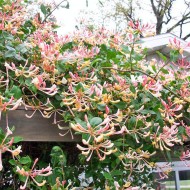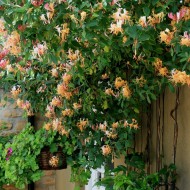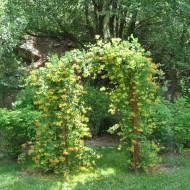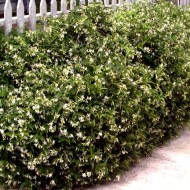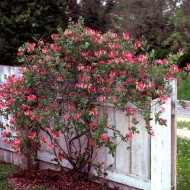We decorate the garden: the use of honeysuckle honeysuckle in landscape design
Content
Decorative qualities of honeysuckle honeysuckle
Honeysuckle (Lonicera) is an erect, creeping and climbing shrub of the Honeysuckle family. In nature, there are about 200 varieties of this culture. However, only honeysuckle honeysuckle (Lonicera caprifolium) received mass distribution.
Honeysuckle honeysuckle, which is popularly called fragrant or goat's, is a deciduous climbing shrub. The maximum height of an adult plant is 6 m. The bark of young shoots has a beautiful light green color with a slight purple tint. Old branches are colored brown.
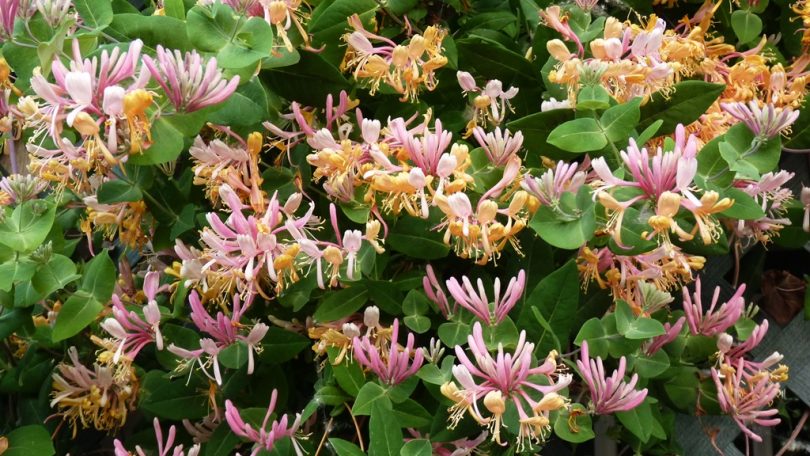
The leaves are characterized by a wide elliptical shape. The length of the leaf plate ranges from 4 to 10 cm. The outer side of the leaf is saturated green, the back is gray-green. Leaves extreme to the end of the shoot grow together in pairs, forming integral elliptical plates. An ornamental shrub does not shed its foliage until late autumn.
During the flowering period, which occurs in May and June, the shrub is covered with tubular flowers. The average flower length is 5 cm. Honeysuckle flowers are formed in groups of 5-10 pcs. The color is white, snow-white, pale pink and light yellow. Colors have streaks of magenta or red on the outside. The flowering period lasts no more than 3-4 weeks. At this time, the plant exudes a pleasant and delicate aroma.
The shrub looks no less interesting at the stage of fruit formation. Red and red-orange oblong berries increase the decorative qualities of the plant. It should be noted that the fruits of honeysuckle, honeysuckle, are not suitable for human consumption.
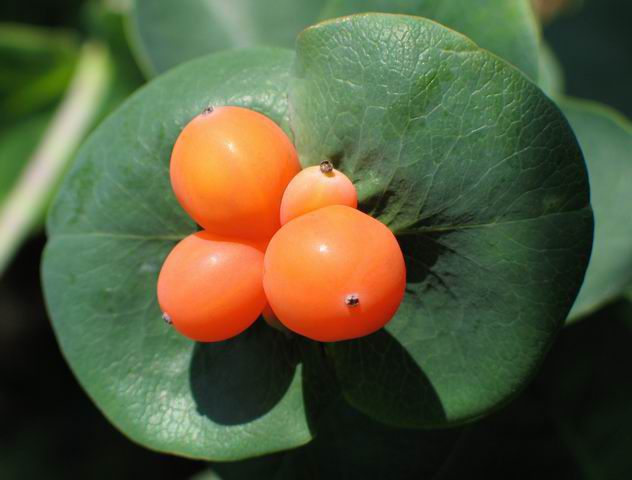
Varieties and types of decorative honeysuckle
Honeysuckle honeysuckle does not have a wide varietal variety. Ornamental culture is represented by three main varieties and several hybrid forms.
Alba
The Alba variety is often used for vertical landscaping and hedging. The plant is distinguished by its fast growth of green mass and long shoots. The maximum length of a climbing liana is 5 m. During the flowering period - from late May to early July - the shrub is literally strewn with tubular white-yellow flowers.
Passionflower
The next representative of the species is the Passiflora variety, which is actively used to decorate fences, garden pavilions and outbuildings. Passionflower flowers are distinguished by a beautiful pale pink color. Shoots can be up to 6 m long.

Inga
Inga variety is deservedly called the most beautiful and fragrant honeysuckle. The average height of the shrub is 3 m. The plant can be used for specimen and group plantings. A distinctive feature of the variety is juicy and abundant flowering. The small tubular flowers combine yellow, cream and pink hues.
Hybrid forms
American honeysuckle and Heckrot's honeysuckle are hybrid forms of an ornamental climbing shrub of the Honeysuckle family.
The American hybrid is native to the Mediterranean. In central Russia and in the Moscow region, it is grown as a creeping ground cover crop. It requires shelter for the winter, since it is not able to cope with even minor frosts on its own.
The Heckrot hybrid is highly regarded for its decorative qualities. Distinctive features of the shrub are rough bluish leaves and red shoots.
Video "Honeysuckle honeysuckle in garden design"
This video tells about the peculiarities of growing a climbing culture.
General rules for planting honeysuckle in the garden
Compliance with the simple rules of planting and growing helps to increase the decorative characteristics of honeysuckle honeysuckle. So, let's figure out how to plant climbing seedlings in open ground.
Lighting and soil requirements
Caprifol does not like frequent transplants. Therefore, it is necessary to approach the choice of a planting site for an ornamental shrub deliberately. For normal life, vines need sunlight. A small shadow is fine.
Honeysuckle must be planted near the support. A wall of a residential building or an outbuilding, a fence, a fence, an arch, a column, a tall tree or a self-made support can serve as a support.
The soil should be light, loose, fertile and well moisturized. At the same time, the desired level of groundwater occurrence is from 1.5 m from the earth's surface.
The choice of planting material
High-quality planting material is the key to successful growth and development of an ornamental shrub. Saplings with 2-3 branches that have reached 2 years of age take root best. The optimum seedling height is 30 cm.
Planting a seedling is carried out according to the following scheme:
- Preparation of a planting pit 40 cm deep and 40 cm in diameter.
- Drainage system formation.
- Laying a nutrient mixture - compost, rotted manure or humus.
- Planting a seedling. Watering and mulching the plant.

Reproduction methods
Honeysuckle can be propagated by vegetative and seed methods. The last option - seed reproduction - is rarely used in practice. The laborious and time-consuming process gives a low germination percentage.
The easiest way is to propagate the culture by layering. Flexible vines are laid in trenches, buried in earth and waiting for young growth.
Propagation by cuttings gives good survival results. For better rooting, cuttings with 2-3 internodes are planted in greenhouses or hotbeds under a film. Caring for rooted cuttings includes watering, loosening the soil and periodic ventilation.
Proper care of decorative honeysuckle
Caring for decorative honeysuckle does not take much time. However, a lack of attention from the gardener can negatively affect the decorativeness and vitality of the plant.
Watering and feeding
Honeysuckle refers to moisture-loving ornamental crops. Water the plant often and abundantly. So, in the absence of precipitation, the bush is watered at least 2 times every 7-10 days. After each watering, the soil is loosened.Also, do not forget about the periodic removal of weeds making their way out of the ground.
You can feed decorative honeysuckle with organic matter or mineral fertilizers. Experienced gardeners recommend the following feeding scheme.
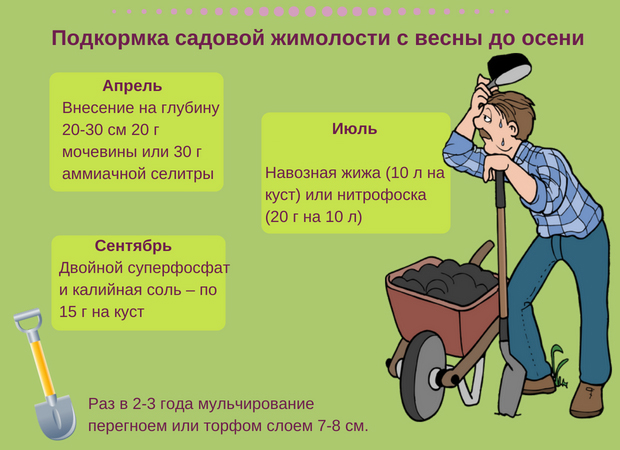
Pruning vines
In early spring, when active sap flow has not yet begun, lianas are pruned. All weak and damaged branches are removed. Healthy shoots are shortened by a third of the length and placed on a support.
Formative pruning is needed for "adult" shrubs. Plants that have not reached the age of 6 need only sanitary pruning.
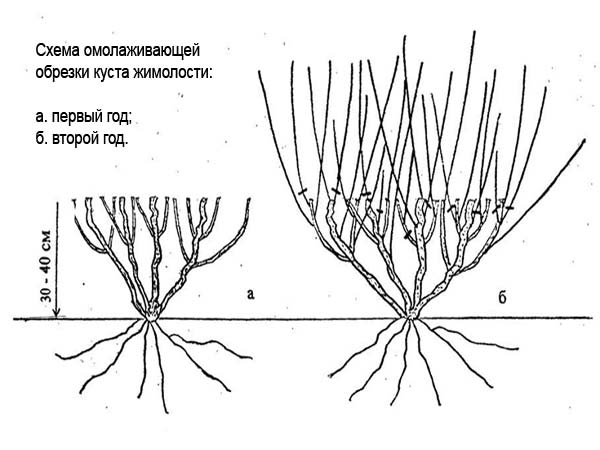
Preparation for wintering
Shrubs grown in the southern regions do not need to be covered for the winter. Varietal and hybrid forms of honeysuckle growing in the northern regions are subject to insulation. It is also recommended to cover seedlings and cuttings recently planted in open ground for the winter.
You can insulate a climbing shrub with dry opal foliage, hay, straw and pine spruce branches. Sheets of slate are laid on top. Instead of slate, you can use thick cardboard, white propylene bags or medium density agrofiber.
Protection from pests and diseases
Ornamental honeysuckle often suffers from invasions of common aphids, scale insects and leafworm caterpillars. Treatment of shrubs with insecticides "Confidor", "Fastak", "Inta-Vir" and "Decis-Profi" will help to get rid of parasites.
Honeysuckle is often affected by the pathogens of powdery mildew, tuberculariosis and cercosporosis. Rapid wilting and the appearance of various types of spots on the leaf plates are considered signs of infection. To save the shrub from fungal infections, Bordeaux liquid (1%) or fungicides "Abiga-Peak" and "Fundazol" are used.
The use of honeysuckle in landscape design
Due to its unpretentious care and high decorative characteristics, honeysuckle honeysuckle has become a favorite plant of gardeners and landscape designers. Consider the most common ways to use shrubs in landscaping adjacent areas and park areas.
- Variants of using honeysuckle honeysuckle in landscape design
Solitaire landings
A beautifully flowering liana-shaped shrub is used for vertical specimen plantings. The plant is used to decorate fences, arches, entrances, gazebos, terraces, walls of houses and outbuildings.
Hedge decoration
The rapidly growing shrub planted along the netting turns into a hedge. A stone or concrete fence of the local area is often hidden behind such a "fence".
Good and bad neighborhood
Honeysuckle does not like the neighborhood with red and black currants. At the same time, the decorative culture gets along well with common hazel, evergreen Iberis, wild grapes, clematis, cherry plum, single-leaf hawthorn, climbing rose, actinidia, climbing nasturtium and conifers.
Honeysuckle honeysuckle is a real decoration of the garden. The high decorative characteristics of the shrub and its captivating aroma during the flowering period will not leave indifferent anyone from the household.

